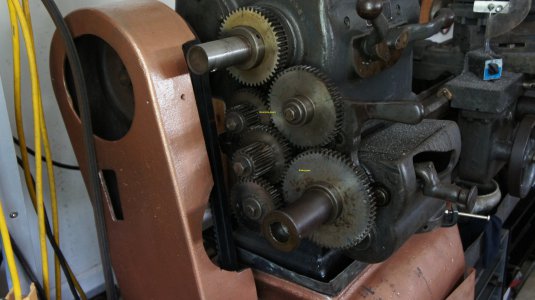- Joined
- Aug 13, 2020
- Messages
- 1,342
Just about every video I've watched describing how to cut metric threads on an imperial lathe involves changing up gears on a banjo that has a couple long slots meant to handle the various sizes of gears.
What do you do if you don't have a slot on your banjo? My Sebastian H model does have a banjo, but it is only for changing the leadscrew direction. The banjo is a solid plate, Each set of the other gears ride on a post, bolted directly into that plate. The only slot, is the short one to allow forward and reverse. I could get very close to the 1.5mm thread I need, if I could swap the 64 tooth sliding gear for a 60. But, the distance between gear centers is locked, so the switch would mean that the gear teeth couldn't reach each other.
Am I missing something?

What do you do if you don't have a slot on your banjo? My Sebastian H model does have a banjo, but it is only for changing the leadscrew direction. The banjo is a solid plate, Each set of the other gears ride on a post, bolted directly into that plate. The only slot, is the short one to allow forward and reverse. I could get very close to the 1.5mm thread I need, if I could swap the 64 tooth sliding gear for a 60. But, the distance between gear centers is locked, so the switch would mean that the gear teeth couldn't reach each other.
Am I missing something?

